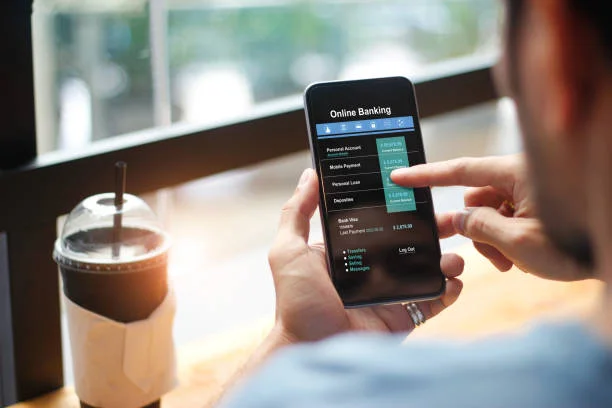Hey there, South African consumer! Have you ever grumbled about bank fees eating into your budget or wished you could manage your money without trekking to a branch? Maybe you’ve noticed friends raving about apps like TymeBank or Bank Zero while you’re still stuck with the same old bank account. Digital banks are shaking up the way we bank in South Africa, promising lower costs, easier access, and cool features—all from your smartphone. But are they really worth the hype, and could they be the future of your personal finance? As a consumer, you want to know: Are these banks safe, affordable, and right for you? This blog dives into the digital banking boom from your perspective, exploring why they’re growing, what they offer, their downsides, and whether you should switch. Packed with real-world examples, data, and tips, we’ll help you decide if digital banking can save you money and simplify your life.
Digital banks are all about managing your money through apps or online platforms, with little to no physical branches. Think of them as banking that fits in your pocket—no queues, no paperwork, just a few taps. Unlike traditional banks like Standard Bank or Absa, which rely on costly branch networks (running at 50% cost-to-income ratios, PwC, 2024), digital banks like TymeBank and Bank Zero operate leanly (20–30% ratios, McKinsey, 2023). This means they can charge you less while offering slick, user-friendly apps. Globally, digital banks are huge—Monzo in the UK has 7 million users—and South Africa’s catching up fast. A 2023 Statista report shows 70% of us used mobile banking apps in 2022, up from 55% in 2019, thanks to smartphones and cheaper data.
Why are digital banks taking off here? First, almost everyone’s got a phone—93% of adults, with 84% using smartphones in cities (GSMA, 2024). Data’s cheaper too, down 30% since 2019 (ICASA), so apps don’t break the bank. Second, let’s be real: traditional banks can be a rip-off. Monthly fees of R100–R450 and branches that feel like they’re only in Sandton frustrate many. A 2023 Deloitte survey found 65% of you want to ditch your bank over high costs. COVID pushed us online, with 40% of transactions going digital by 2021 (SARB). Plus, digital banks are reaching people traditional banks ignore—16% of adults are unbanked (FinScope, 2022), and apps offer cheap accounts or small loans to help folks like street vendors or part-time workers get started.
Let’s meet the stars of South Africa’s digital banking scene: TymeBank, Bank Zero, and Discovery Bank. TymeBank is a big deal with 8.5 million customers (2024), partnering with Pick n Pay and Boxer so you can open accounts or deposit cash at store kiosks. It’s perfect for everyday folks, with low or no fees and a GoalSave feature paying up to 8% interest. Bank Zero, started by ex-FNB boss Michael Jordaan, charges zero fees for things like transfers or debit orders. It’s all-app, ideal for tech-savvy types who hate costs. Discovery Bank, with 600,000 customers (Discovery, 2024), is pricier but rewards you for healthy habits (like saving or budgeting) through its Vitality Money program, great if you’re into Discovery’s vibe.
| Feature | TymeBank | Bank Zero | Discovery Bank |
|---|---|---|---|
| Fees | Low/no fees (e.g., R4 deposits) | Zero fees | R75–R150/month |
| Who’s It For? | Everyone, especially unbanked | Cost-conscious tech lovers | Affluent, health-focused |
| Access | Store kiosks + app | App only | App + some hubs |
| Cool Perk | GoalSave (8% interest) | Top-notch security | Vitality rewards |
Sources: TymeBank, Bank Zero, Discovery Bank, MyBroadband (2024).
So, what’s in it for you? Digital banks can save you serious cash. MyBroadband (2024) found Bank Zero’s transactions cost R0, while traditional banks charge R20–R50 for the same. TymeBank’s deposits are R4, not R10–R20 like Absa. Signing up is a breeze—5 minutes on your phone, no branch visits (SARB, 2023). They’re inclusive too: TymeBank adds 100,000 customers/month in places banks don’t reach, offering loans from R500 for small needs (Fintech Times, 2021). Features are next-level—Discovery’s Vitality Money can cut your loan rates by 20% if you manage money well, like avoiding overdrafts. TymeBank’s GoalSave gives 8% interest, so R10,000 earns R800/year, beating inflation (4.6%, 2024) and traditional banks’ 5.5% (R550/year). If you’re struggling with South Africa’s 62% debt-to-income ratio (StatsSA, 2023), these tools help you save or borrow smarter.
But it’s not all smooth sailing. If you’re in a rural area, 40% of you might not have reliable internet (GSMA, 2024), making apps tricky. If you’re not tech-savvy, navigating them can feel overwhelming. Security’s a worry—R1.2 billion was lost to banking fraud in 2023 (SABRIC), with scams like phishing hitting app users. 61% of African banks skimp on cybersecurity (African Banking Transformation Report, 2023), so you need to stay vigilant. Cash is still king for 30% of transactions (SARB, 2024), but Bank Zero doesn’t handle cash, and TymeBank relies on store kiosks. Older folks or those who love face-to-face help might hesitate—45% of over-50s stick to branches for trust, per a 2023 Accenture survey. Digital banks also don’t do everything—big loans, investments, or complex disputes might still need a traditional bank.
What do other consumers think? A 2023 Deloitte survey says 72% of city dwellers use mobile banking, but only 48% in rural areas, thanks to spotty internet. Gen Z is all in—80% love digital platforms for speed and savings (PwC, 2024)—but 55% of you fret about data privacy. In Joburg, 60% of TymeBank’s new users are low-income, loving kiosks (FinScope, 2023). In rural Limpopo, only 30% use digital banking due to connectivity woes. Thandi M., a Soweto shop assistant, says, “TymeBank saves me R100/month, and I opened it at Boxer in 10 minutes. But I’m nervous about scams after my friend lost R5,000.” Fintech expert Sarah Ngcobo from Investec adds, “Digital banks are a win for cost and access, but they need to fix rural gaps and build trust.”
The government’s got their back, sort of. The South African Reserve Bank (SARB) and Financial Sector Conduct Authority (FSCA) make sure digital banks follow strict rules to keep your money safe, licensing TymeBank, Bank Zero, and Discovery since 2018. They work with regular bank systems like EFTs (SARB Fintech Report, 2023). But getting licensed takes forever, slowing new banks. Load shedding and bad internet—20% of homes face outages (Eskom, 2024)—mess with apps. South Africa’s behind on “open banking” (sharing data for better services), unlike Nigeria, which limits cool features (MIT Sloan, 2023). Still, SARB’s pumped R500 million into digital banking trials by 2024, so they’re serious about growth.
What’s next? McKinsey (2023) predicts digital banks will grab 20% of banking revenue (R230 billion market) by 2025, up from 10%. Picture banking woven into daily life—like paying at Pick n Pay and getting a loan on the spot. AI will offer budgeting tips tailored to you—69% of African banks plan this by 2026 (African Banking Transformation Report, 2023). Blockchain could make transfers safer and cheaper, with Standard Bank testing it in 2024. Partnerships with MTN or insurers might bring digital wallets or micro-insurance. But challenges loom: 46% inequality (World Bank, 2024) means not everyone can afford smartphones or data. Fraud’s rising—65% of you worry about it (World Bank, 2024). Older folks and small businesses, with 40% preferring traditional banks for loans (Business Leadership SA, 2024), might not jump ship.
Should you switch? Digital banks aren’t perfect for everyone yet, but they’re a game-changer if you want low fees, quick access, and smart tools. TymeBank’s 8.5 million users and Gen Z’s love for apps show they’re here to stay. They shine for the unbanked, young, or budget-conscious, but rural users or those needing big loans might need traditional banks too. The future’s probably a mix—digital for convenience, branches for big stuff. If you’re fed up with fees or want banking on your terms, digital’s worth a shot. Here’s how to start:
- Check Fees: Use MyBroadband.co.za to compare your bank’s costs with TymeBank or Bank Zero.
- Test an App: Download TymeBank (great for low-income or rural users with kiosks) or Bank Zero (free and simple). Discovery’s ideal if you’re into rewards but don’t mind fees.
- Stay Safe: Use strong passwords, avoid public Wi-Fi, and check for two-factor authentication.
- Ask Yourself: Need cash often? Prefer face-to-face? If yes, stick with a hybrid or traditional bank.
So, are digital banks the future of your personal finance in South Africa? They’re not quite ready to replace traditional banks entirely, but with TymeBank’s 8.5 million users, zero-fee options like Bank Zero, and innovative perks from Discovery Bank, they’re changing the game for consumers like you. They offer unbeatable savings, lightning-fast access, and tools to make your money work harder—perfect if you’re tired of high fees or want banking that fits your busy life. Yet, challenges like rural connectivity, cybersecurity risks, and the need for cash or in-person support mean they’re not a one-size-fits-all solution just yet. The future looks like a smart blend of digital convenience and traditional reliability, giving you the freedom to choose what works best. Take control of your finances now—download a digital banking app, compare fees, and see how much you can save. Your wallet deserves it!


